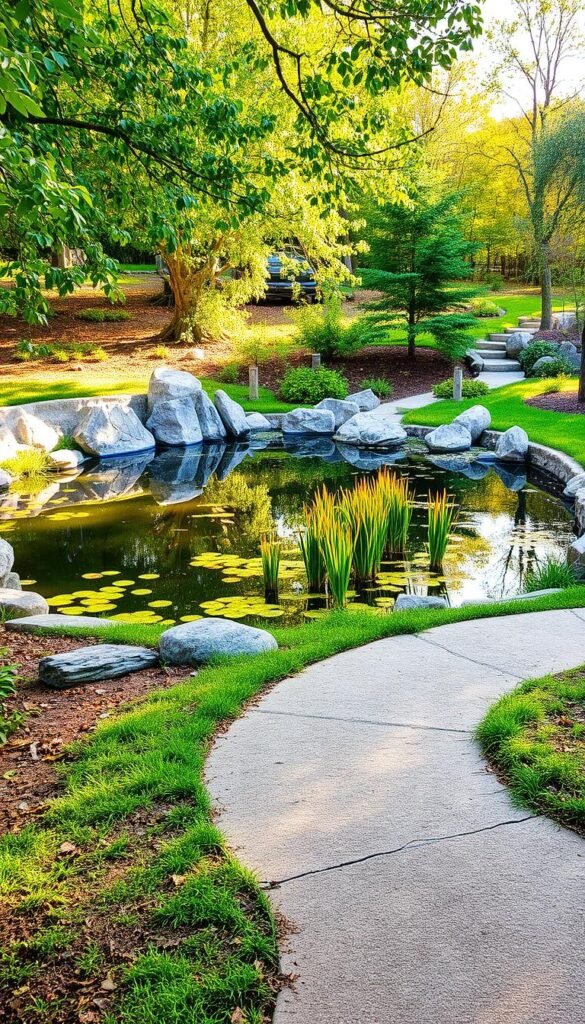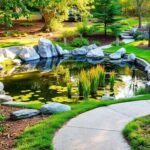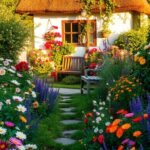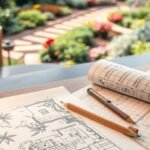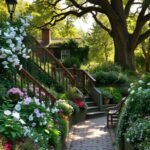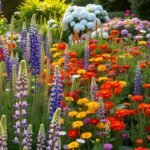A well-designed water feature can turn your yard into a peaceful retreat. Imagine listening to gentle streams while watching colorful fish glide through crystal-clear water. This isn’t just about beauty—ponds boost curb appeal and create habitats for birds, frogs, and pollinators.
Planning is key to blending your new aquatic element with existing greenery. Think about proportions, shapes, and how sunlight interacts with the space. Strategic placement ensures your pond feels like a natural extension of your environment, not an awkward add-on.
Maintenance matters too. From choosing low-effort plants to budgeting for pumps and filters, smart decisions upfront save time and money. Whether you prefer a simple setup or a cascading waterfall, understanding costs helps tailor the project to your lifestyle.
Ready to explore how water transforms outdoor areas? Let’s dive into design tips, ecological benefits, and practical steps to build a captivating focal point that elevates your property’s charm.
Understanding Your Outdoor Space and Ideal Pond Placement
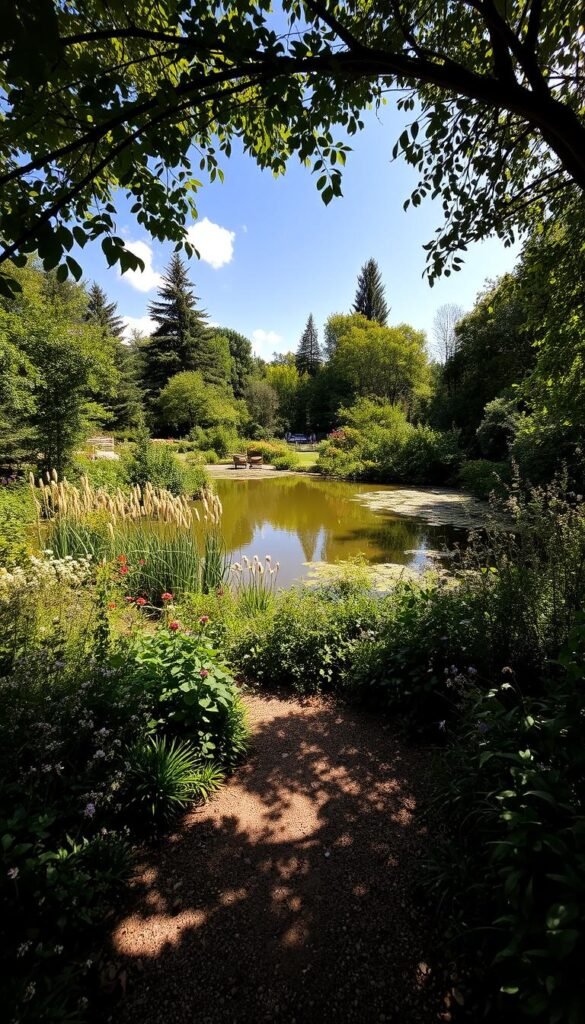
The secret to a thriving water feature lies in working with your yard’s natural rhythms. Start by walking your property at sunrise, noon, and dusk. Notice where shadows fall and sunlight lingers. Partial sun exposure (4-6 hours daily) keeps algae in check while nourishing plants like water lilies.
Sunlight Patterns and Site Features
Sloped areas offer creative opportunities. Use existing dips for natural-looking basins that blend with your environment. Avoid low spots where rainwater pools – these can flood your pond during storms. Keep 10-15 feet between water features and tree canopies to limit leaf debris.
Ground Conditions and Water Dynamics
Clay-heavy soil holds water well but needs proper grading. Sandy ground may require underlayment adjustments. Always contact utility companies before digging – hitting gas lines ruins more than just your day. For sustainable landscape principles, observe how rainfall moves across your land. Channel this flow to reduce pump dependency.
Test drainage by pouring a bucket where you plan to build. If water sits longer than an hour, consider raised edges or overflow channels. Your pond should enhance the space, not fight it – like finding the perfect spot for a favorite chair.
Planning a Natural Pond Layout that Works for You
Forget straight edges—wild, meandering shorelines make ponds blend effortlessly. Start by laying a garden hose on the ground to sketch flowing curves that mirror your yard’s contours. This simple trick helps visualize how water interacts with existing trees, slopes, or rock formations before digging begins.
Incorporating Organic, Curved Shapes
Nature thrives on imperfection. Avoid symmetrical circles and squares—irregular shapes create authentic-looking water features. A figure-eight design with tapered ends works well for narrow spaces, while kidney-shaped ponds add softness to open areas. Let existing features guide your layout: curve around a mature oak or follow a natural slope for seamless integration.
| Shape | Depth Variation | Wildlife Support | Plant Zones |
|---|---|---|---|
| Kidney | 2-3 ft center | Frogs, fish | 3+ tiers |
| Figure-Eight | Gradual slopes | Birds, insects | 4+ areas |
| Freeform Curve | Multiple pools | Diverse species | 5+ sections |
Designing Levels and Depths for Aquatic Life
Create a depth variety to support different species. Include:
- A 24″-deep zone for fish to overwinter
- 6″-12″ shelves for marginal plants
- Gradual slopes for wildlife access
Shallow areas let sunlight reach oxygenating plants, while deeper sections protect aquatic life from temperature swings. This layered approach builds a balanced ecosystem that thrives year-round.
How to Create a Garden Pond That Complements Your Landscape Design
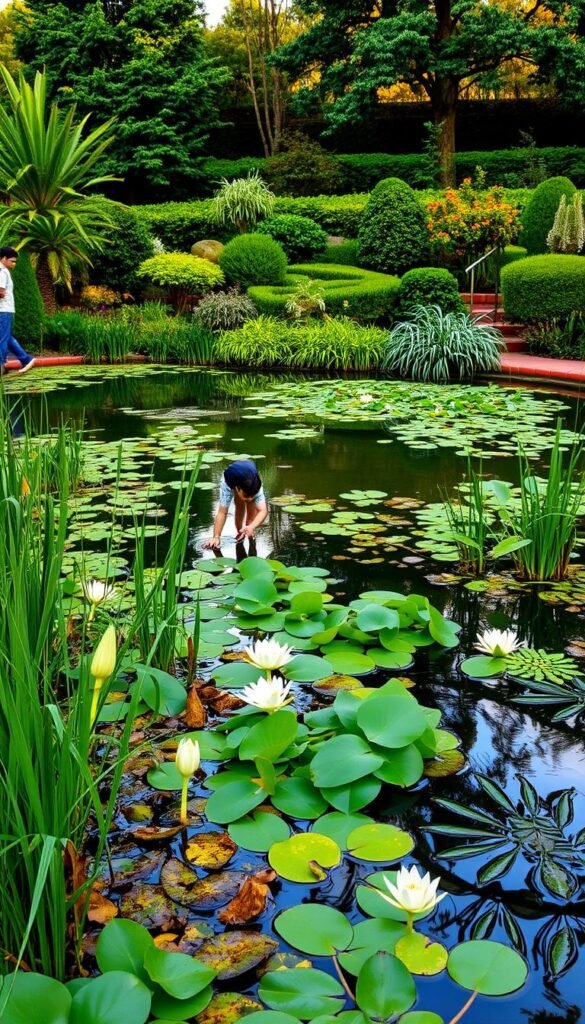
Blending water elements with your existing yard features requires thoughtful coordination. Start by studying your space’s color palette – do warm earth tones dominate, or cool blues and greens? Match pond edges to nearby stonework or repeat foliage textures in aquatic plant selections for invisible transitions.
Key Elements for Ecological Harmony
Successful water features thrive when supporting local ecosystems. Include shallow beach areas for birds to drink and native plants that feed pollinators. A balanced setup might feature:
| Element | Ecological Benefit | Visual Impact |
|---|---|---|
| Frog logs | Amphibian habitat | Natural texture |
| Oxygenating grasses | Water purification | Underwater movement |
| Rainwater catchment | Reduced runoff | Reflective surfaces |
Balancing Water Features with Surrounding Garden Areas
Connect land and water through strategic plant placement. Let ornamental grasses spill toward the pond’s edge, or mirror shrub shapes in water lily pads. For seamless integration, consider designing garden water features that follow existing pathways or frame favorite sitting areas.
Use boulders matching your home’s foundation to anchor the design. This creates rhythm while letting the water’s shimmering beauty take center stage. Remember – your new aquatic addition should feel discovered, not installed.
Selecting the Right Materials and Equipment for Your Pond
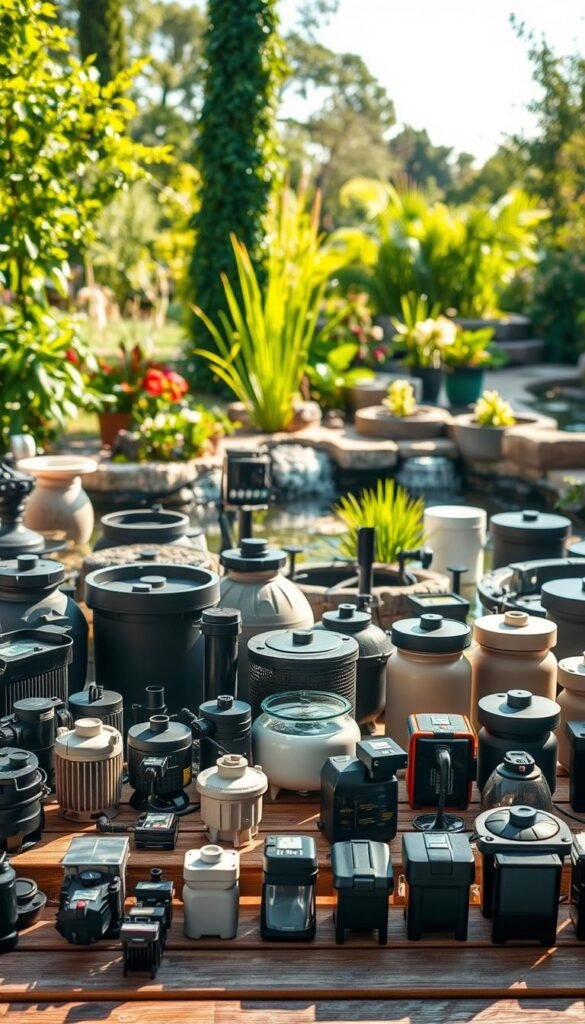
The right materials transform your water feature from temporary to timeless. Start with a durable liner—it’s the backbone protecting your investment. Reinforced polyethylene handles sharp rocks better, while EPDM rubber adapts to organic shapes. Both materials resist punctures and last 20+ years with proper care.
Choosing Durable Liners, Pumps, and Filters
Match pump capacity to your pond’s size. A 1,000-gallon feature needs a pump moving 500 gallons hourly for healthy circulation. Filters work best when layered—mechanical skimmers catch leaves, while biological media break down fish waste. Quality equipment reduces cleaning time by 40% compared to budget options.
| Equipment Type | Lifespan | Best For | Maintenance Needs |
|---|---|---|---|
| EPDM Liner | 25+ years | Curved designs | Annual inspection |
| Submersible Pump | 5-7 years | Small ponds | Monthly cleaning |
| Pressurized Filter | 8-10 years | Fish habitats | Weekly rinsing |
Integrating Cost-Effective and Reliable Equipment
Balance upfront costs with long-term savings. Solar-powered pumps cut energy bills but require sunlight exposure. Choose UV clarifiers if algae plagues your region—they zap spores without chemicals. Local climate dictates choices: frost-proof systems matter in colder zones, while shaded ponds need stronger pumps.
Test equipment before final installation. Run pumps for 48 hours to spot leaks or noise issues. Proper selection now prevents weekend repair marathons later. Your clear, thriving water feature starts with these smart foundation choices.
Integrating Aquatic and Marginal Plants for a Natural Look
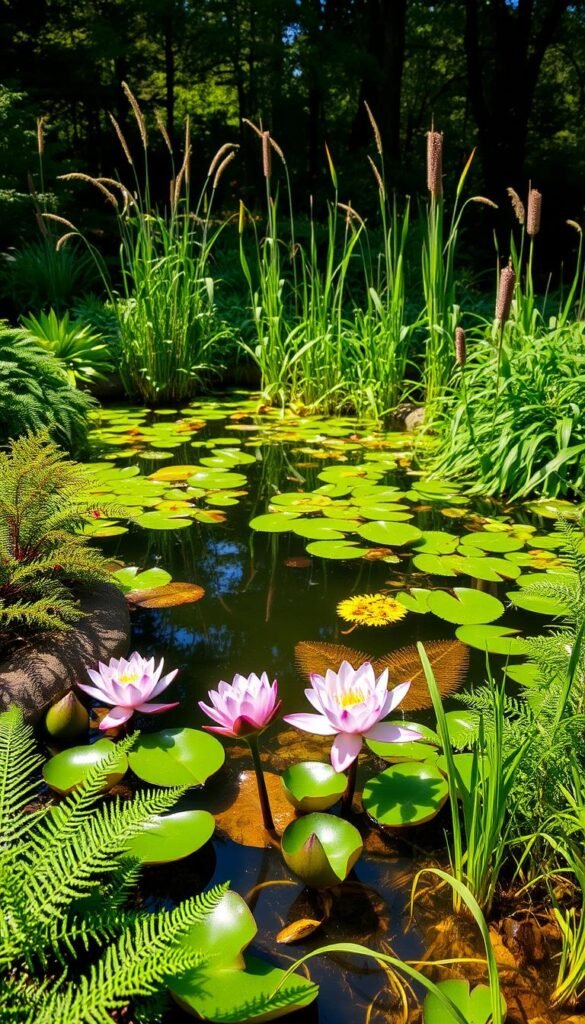
The magic of a thriving water feature begins with its plant life. Strategic selections create living filters while softening edges between land and water. Aim for a mix that serves multiple roles – beauty, shade, and habitat support all in one.
Floating Plants, Water Lilies, and Submerged Varieties
Start with surface cover. Duckweed forms a green carpet that cools the water, while water lilies offer shade and shelter for fish. Their broad leaves block sunlight, cutting algae growth by up to 60%. Submerged varieties like hornwort work unseen, releasing oxygen and absorbing excess nutrients.
| Plant Type | Function | Example Species |
|---|---|---|
| Floating | Sunlight reduction | Water lettuce |
| Surface | Shelter provider | Tropical lotus |
| Submerged | Oxygen production | Eelgrass |
Using Marginal Plants to Seamlessly Tie to Your Landscape
Transition zones matter most. Yellow Flag Iris bridges water and soil with its sword-like leaves, while Purple Loosestrife adds vertical interest. Cluster rushes in uneven groups along the bank – their random placement mimics nature’s spontaneity.
Space plants 12-18″ apart to prevent overcrowding. Shallow shelves let marginal varieties establish roots without drowning. As landscape designer Lauren Springer notes, “Plants should look like they chose their spot, not the other way around.”
Maximizing Water Quality and Flow for a Vibrant Ecosystem
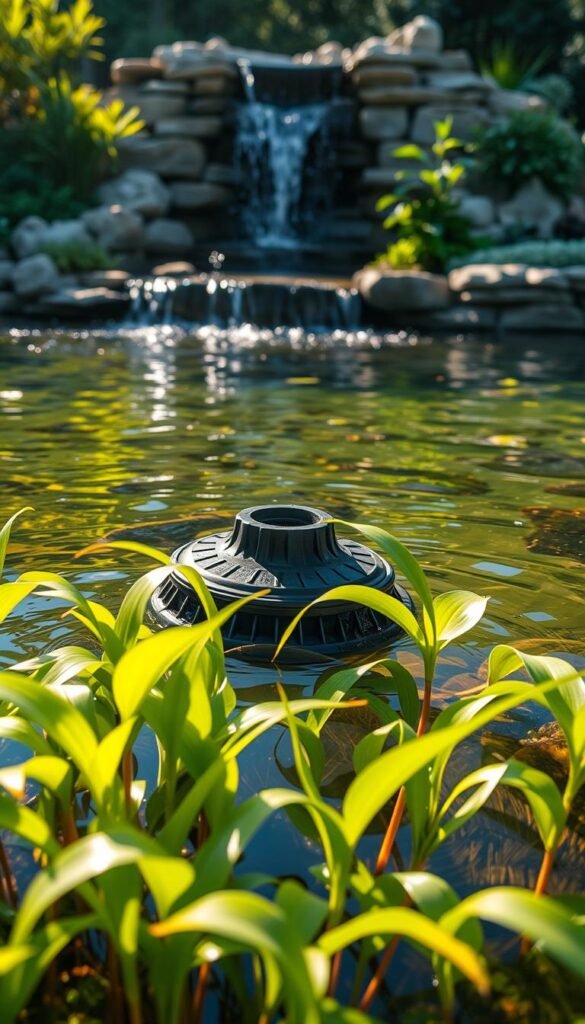
Clear water and thriving wildlife start with smart balance. A natural bog filter works like nature’s purification system, using plants and gravel to clean water without chemicals. Build one beside your pond using 20% of its surface area – this hidden powerhouse keeps your aquatic environment healthy.
Building Effective Filtration Systems
Dig your filter basin 18-24″ deep, slightly higher than the pond. Layer pea gravel and river rocks to create a cleansing maze. Water trickles through plant roots like cattails and sweet flag, which absorb excess nutrients that fuel algae growth. This method reduces maintenance by 30% compared to traditional filters.
Weekly debris removal stops organic matter from rotting. Use a skimmer net for leaves and twigs – it takes minutes but makes a huge difference. During dry spells, top up water levels with collected rainwater. This preserves your pond’s pH balance better than treated tap water.
| Filtration Method | Algae Reduction | Oxygen Boost | Maintenance Frequency |
|---|---|---|---|
| Bog Filter | 70-80% | High | Monthly |
| Aeration Systems | 40-50% | Very High | Biweekly |
| Plant Competition | 60-70% | Moderate | Seasonal |
Proper water flow prevents stagnation. Position pumps to create gentle surface movement – it oxygenates water while discouraging mosquito breeding. For persistent issues, our guide on common water issues offers troubleshooting tips. Remember, thriving ecosystems need both clean water and constant motion!
Enhancing Aesthetics with Natural Rock Arrangements and Lighting
Your water feature’s final layer of beauty comes from thoughtful details that bridge land and liquid. Strategic stone placement and subtle illumination turn functional elements into artistic statements that shine day and night.
Creating Organic Rock Borders and Edge Transitions
Local stone varieties anchor your design to the surrounding terrain. Mix boulders with flat flagstones along the water’s edge, leaving gaps for spontaneous plant growth. Bury rocks partially to mimic natural erosion patterns—this trick hides liner edges while preventing soil runoff.
Vary stone sizes for visual interest. Cluster smaller pebbles near seating areas where smooth textures invite touch. Use moss or creeping thyme between cracks to soften transitions. These living seams make hardscapes feel like they’ve always belonged.
Incorporating Ambient Lighting for Evening Ambience
Low-voltage LEDs cast gentle glows without overpowering nature’s night sounds. Position spotlights behind rocks to silhouette interesting shapes on nearby surfaces. Submersible fixtures make waterfall streams sparkle like liquid mercury after dark.
Choose warm white tones (2700-3000K) to attract fewer insects. Solar-powered path lights guide feet safely while highlighting specimen plants. Remember—lighting should enhance moods, not mimic daylight. A few well-placed accents create magic without disturbing nocturnal wildlife.

